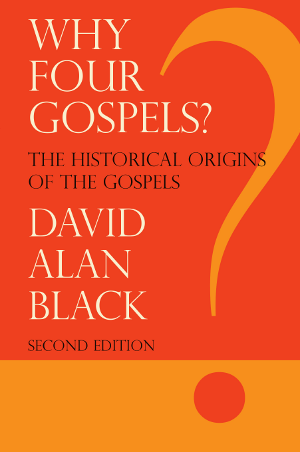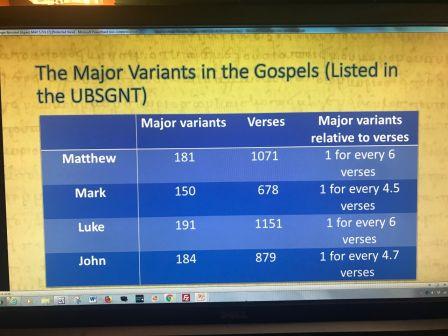(June 6, 2020) 7:45 AM A few years ago I asked, “Why are there four gospels in our New Testament and not, say, three or five?”

But as I read Gal. 2:1-10 this morning — the next paragraph in my study of this marvelous letter — I can see how my question might be a bit misleading. Paul has much to say about this subject in our passage. To read these verses is to derive one conclusion and one conclusion only: There is only one gospel. And it is through this gospel that Jews and Gentiles alike are accepted by God on the same terms — through faith in Jesus Christ. Now if there is only one gospel for the apostle Paul and for the Jerusalem apostles, shouldn’t there be only one gospel for us? How, then, can we speak of four “gospels”?
The reason is simple: the term “gospel” (euangelion) originally referred only to a message. Thus in the New Testament, euangelion never refers to a book. Later, the term was broadened in meaning to include what we today call the written “gospels” of Matthew, Mark, Luke, and John. So in one sense, there is only one gospel in the New Testament, and there is only one gospel for the church. This gospel message hasn’t changed in two millennia. Whether it is proclaimed to young or old, Jew or Gentile, cultured or uncultured, its substance never changes. Peter and Paul preached the same gospel, and so must we.
One way, I think, to overcome the apparent contradiction between this “one gospel” and the “four gospels” is to refer to the latter, as I do in my book Why Four Gospels?, as the “fourfold gospel.” This is, in fact, how the early church referred to them. In addition, when these four accounts of the life of Christ were originally published, their titles were not “The Gospel of Matthew,” “The Gospel of Mark,” etc. They were, instead, “The Gospel according to Matthew,” “The Gospel according to Mark,” and so forth. This is without a doubt the best way to refer to them today, and I myself have tried to do so in my teaching and writing, though I often lapse back into “The Gospel of Matthew.” Certainly, there are differences of style between these four accounts. There are also differences of emphasis. All this I point out in my book. But their substance is the same, and the early church was at pains to emphasize this. This matter is of importance to us today because there are some who want to pit Matthew against Mark, for example, or John against Luke. They openly allege that the gospels contradict one another. Therefore, they can’t be trusted. That there are apparent contradictions between the written gospels, no one will deny. But they are capable of explanations that do not require us to sacrifice the inspiration and inerrancy on the altar of scholarship. Each gospel writer, under the direction of the Holy Spirit, had to select and arrange the material in his book. This material will naturally vary from gospel to gospel. And this is one reason we must study these accounts horizontally — using a harmony of the gospels or a Greek synopsis to do so. Not only that, each gospel has a different purpose. Matthew wrote to accomplish one thing, Mark another, Luke another, and John yet another. And so we must read each gospel vertically (from beginning to end) if we are to understand its unique emphasis. The lesson that stands out for me in this paragraph from Galatians is that there is only one true gospel message, the gospel of grace, of God’s free and unmerited favor. To turn from that gospel is to turn from the grace of Christ. In this sense, the church does not have more than one gospel. Both Paul and Peter had been entrusted with the same gospel. And that gospel it our common message today.
Hope this made sense!
(From Dave Black Online. Used by permission.)

